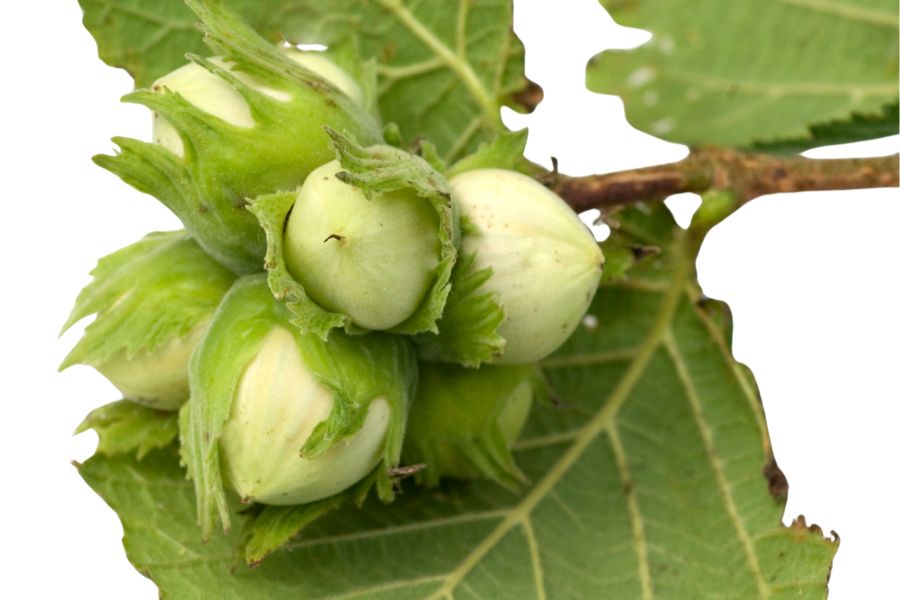The woods and fields of Minnesota hold all kinds of tasty treasures. Our state offers plenty of free food right outside your door. Learning which plants you can eat connects you to the land in a special way.
Moreover, foraging saves money and brings fresh flavors to your meals. The food you gather yourself often contains more vitamins than store-bought options..
However, safety matters most when collecting wild plants. Never eat anything unless you feel completely sure about what it is. Learning from experienced foragers builds your knowledge.
Minnesota offers four distinct seasons of foraging possibilities. Each month brings different plants ready for harvest throughout our beautiful state. Let me show you what grows where and when to find it.
What We Cover In This Article:
- The Edible Plants Found in the State
- Toxic Plants That Look Like Edible Plants
- How to Get the Best Results Foraging
- Where to Find Forageables in the State
- Peak Foraging Seasons
- The extensive local experience and understanding of our team
- Input from multiple local foragers and foraging groups
- The accessibility of the various locations
- Safety and potential hazards when collecting
- Private and public locations
- A desire to include locations for both experienced foragers and those who are just starting out
Using these weights we think we’ve put together the best list out there for just about any forager to be successful!
A Quick Reminder
Before we get into the specifics about where and how to find these plants and mushrooms, we want to be clear that before ingesting any wild plant or mushroom, it should be identified with 100% certainty as edible by someone qualified and experienced in mushroom and plant identification, such as a professional mycologist or an expert forager. Misidentification can lead to serious illness or death.
All plants and mushrooms have the potential to cause severe adverse reactions in certain individuals, even death. If you are consuming wild foragables, it is crucial to cook them thoroughly and properly and only eat a small portion to test for personal tolerance. Some people may have allergies or sensitivities to specific mushrooms and plants, even if they are considered safe for others.
The information provided in this article is for general informational and educational purposes only. Foraging involves inherent risks.
The Edible Plants Found in the State
Wild plants found across the state can add fresh, seasonal ingredients to your meals:
Wild Rice (Zizania palustris)
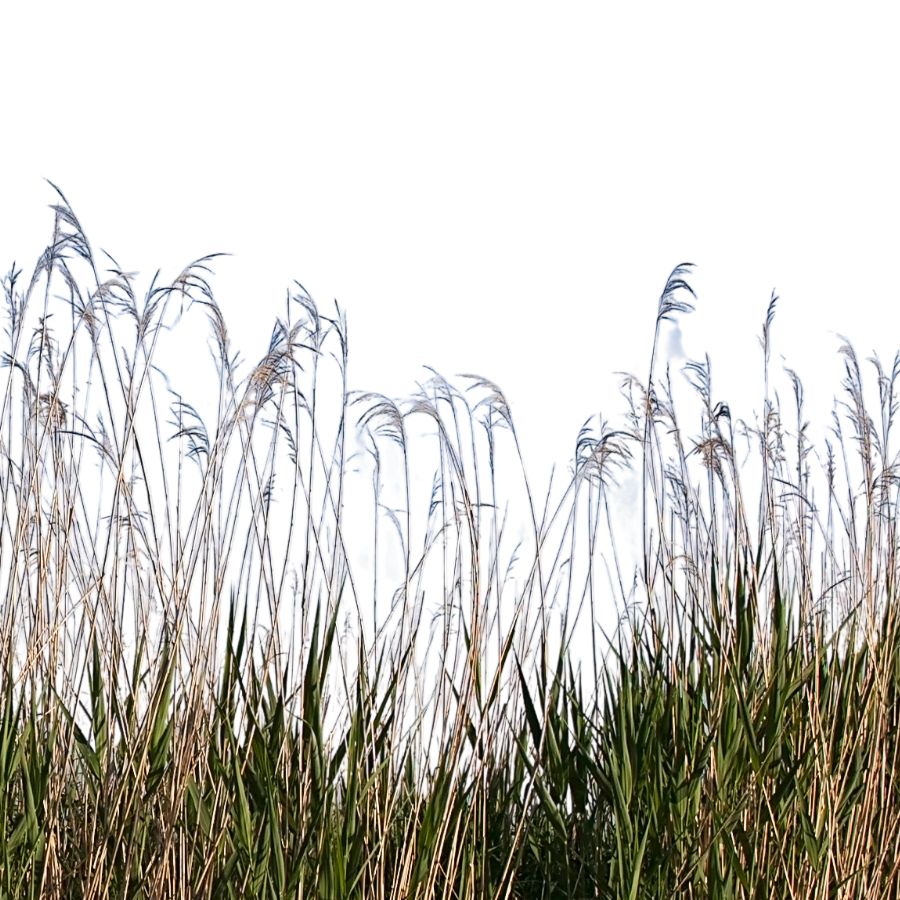
Wild rice grows in the shallow waters of lakes and slow-moving streams across North America. This aquatic grass can reach heights of 3-10 feet, with long ribbon-like leaves and elegant seed heads that droop when mature.
The grains have a nutty flavor and chewy texture that many prefer over store-bought varieties. Despite its name, wild rice isn’t actually rice but the seed of an aquatic grass traditionally harvested by Indigenous peoples using canoes.
When identifying wild rice, look for plants growing in water with distinctive branching seed heads that turn from green to brown as they mature. There are no toxic lookalikes, though cultivated wild rice is often confused with the true wild variety.
Only the seeds are edible, requiring careful harvesting and processing including drying and parching. This nutritious grain contains more protein than common rice and offers impressive amounts of fiber, minerals and antioxidants.
Juneberry (Amelanchier alnifolia)
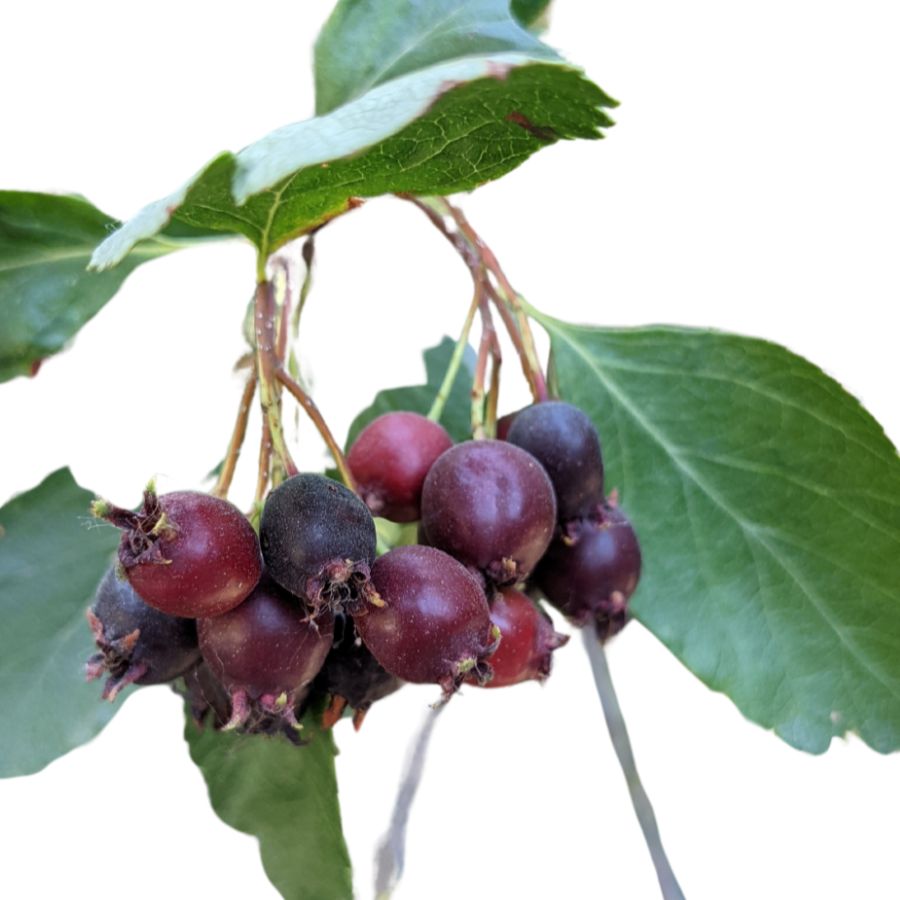
Juneberry trees produce clusters of small, round fruits that ripen from red to deep purple-blue in early summer. The berries grow on small trees or shrubs with smooth gray bark and oval leaves that have finely toothed edges.
Their flavor combines elements of cherry, almond, and blueberry, making them prized among wild food enthusiasts. The plants display showy white flowers in spring before the fruits develop.
When foraging for juneberries, look for the distinctive star-shaped indentation on the berry’s end. They might be confused with chokecherries, but juneberries have smaller seeds and lack the astringent quality.
The entire berry is edible and can be enjoyed fresh or used in jams, pies, and syrups. Native American tribes traditionally mixed them with meat to create pemmican. These nutritional powerhouses contain high levels of iron, fiber, and antioxidants that support overall health.
Thimbleberry (Rubus parviflorus)
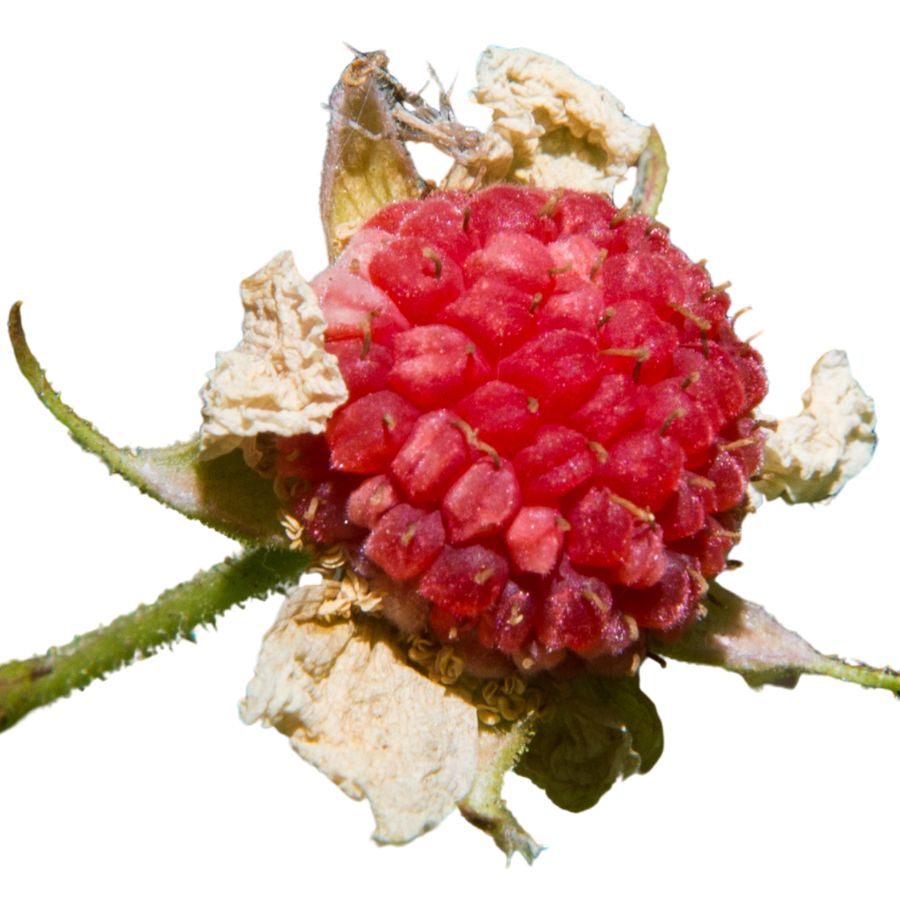
Thimbleberry is a native shrub that produces bright red, hollow berries with a seedy, melt-in-your-mouth texture. You can eat them raw, but they’re often used in jams and desserts because they fall apart easily.
The leaves are soft and wide with five deep lobes, unlike the more jagged or compound leaves of black raspberry or blackberry. Be cautious of misidentifying it with red raspberry, which has thorny stems and smaller, firmer fruit.
There’s no commercial thimbleberry farming because the fruit is too fragile to ship.
Thimbleberry has no thorns, which makes harvesting less painful compared to other berries in the same family. The plant’s white, five-petaled flowers are another clue you’ve found the right thing.
Don’t eat the leaves or stems; they aren’t toxic, but they’re not used for food.
Black Raspberry (Rubus occidentalis)

Black raspberries grow on arching canes covered with small, hooked thorns. The berries start out red before ripening to a deep purplish-black color, and they have a hollow core when picked.
The fruit tastes sweet with a mild tartness, and the texture is juicy but slightly firmer than a red raspberry. People often use black raspberries for jams, pies, syrups, and even simple fruit leathers made at home.
Blackberry and wineberry are common lookalikes, which can confuse foragers at first glance. Black raspberry canes usually have a whitish coating and smaller thorns compared to the shinier, stouter canes of a blackberry.
You can eat the ripe fruit raw or cooked, but the leaves are sometimes brewed into teas after proper drying. It is best to avoid the green, unripe berries, as they are tough and lack the flavor that makes black raspberry such a favorite.
Wild Plum (Prunus americana)
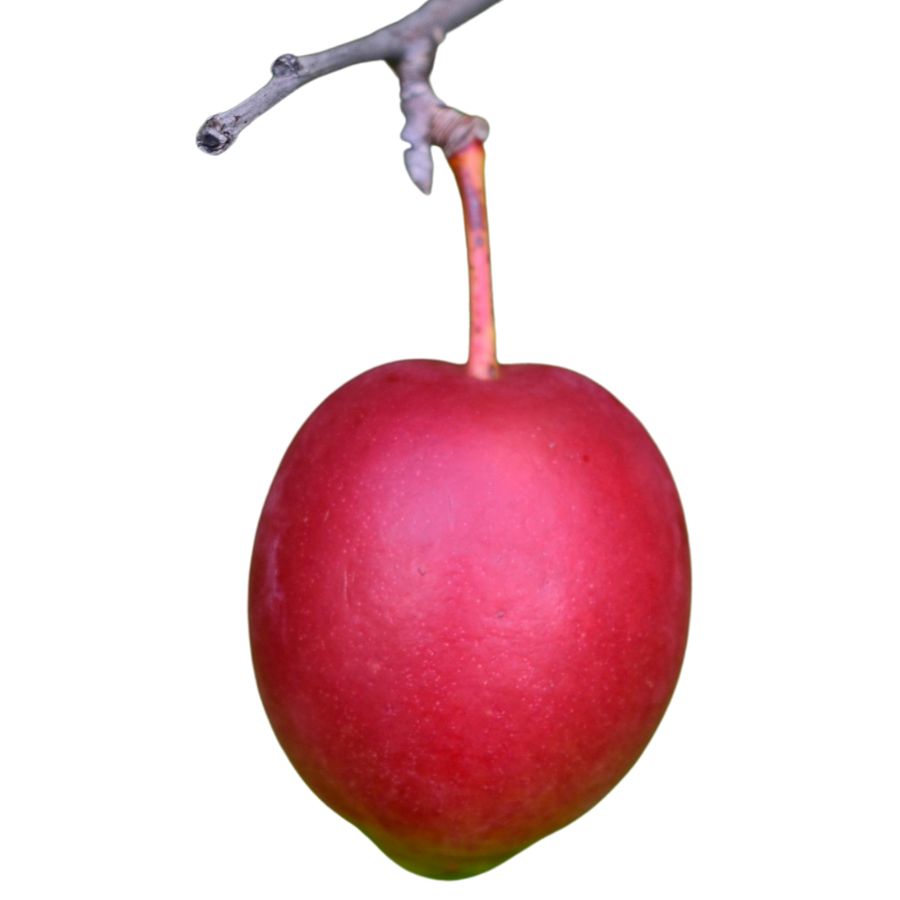
Wild plum trees form thorny thickets along woodland edges and stream banks throughout eastern North America. In spring, the branches become covered with fragrant white blossoms before developing their distinctive fruits.
The round, 1-inch fruits range in color from yellow to red to purple when ripe. Their sweet-tart flesh surrounds a single hard pit and develops best flavor after light frosts in late summer.
Proper identification includes noting the tree’s thorny branches and the fruit’s resemblance to cultivated plums. Some foragers might confuse wild plums with cherries, but the larger fruit size and growth habit help distinguish them.
Only the fruit flesh is safe to eat, as the pits contain small amounts of cyanide compounds. These nutritious fruits offer significant vitamin C and antioxidants. Traditional uses include jams, jellies, and baked goods that highlight their unique tangy-sweet flavor profile.
Chokecherry (Prunus virginiana)
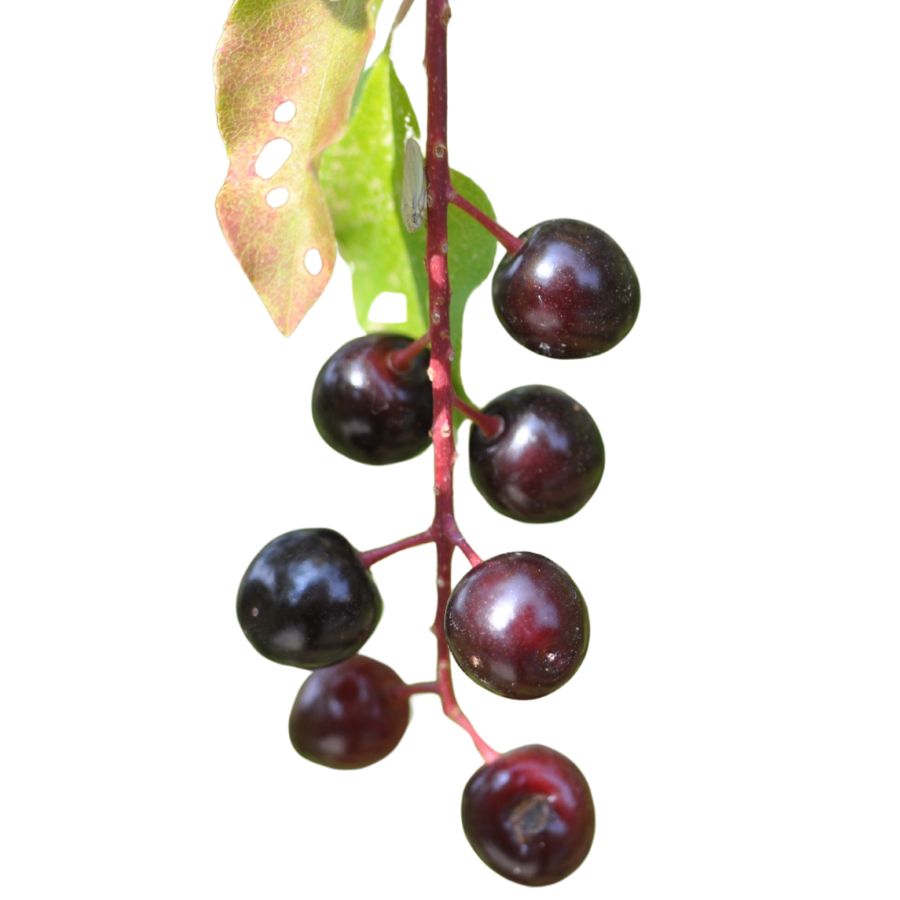
Chokecherry trees produce abundant clusters of small berries that turn dark purple-black when fully ripe. These common native trees grow 10-30 feet tall with oval, finely toothed leaves and white spring flowers that grow in cylindrical clusters.
The fruit has a distinctive astringent quality that gives the tree its name. Though too tart to enjoy raw, the berries transform when cooked with sugar into delicious jams and syrups.
The berries grow in elongated clusters called racemes, unlike the flat clusters of elderberries, which are sometimes confused with chokecherries. The pits, stems, and leaves contain toxic compounds and should never be consumed.
Proper preparation involves removing the pits and cooking the fruit. Indigenous peoples across North America valued chokecherries highly, using them in pemmican and ceremonial foods. The berries contain high levels of antioxidants and were traditionally used to treat colds and digestive issues.
Hazelnut (Corylus americana)
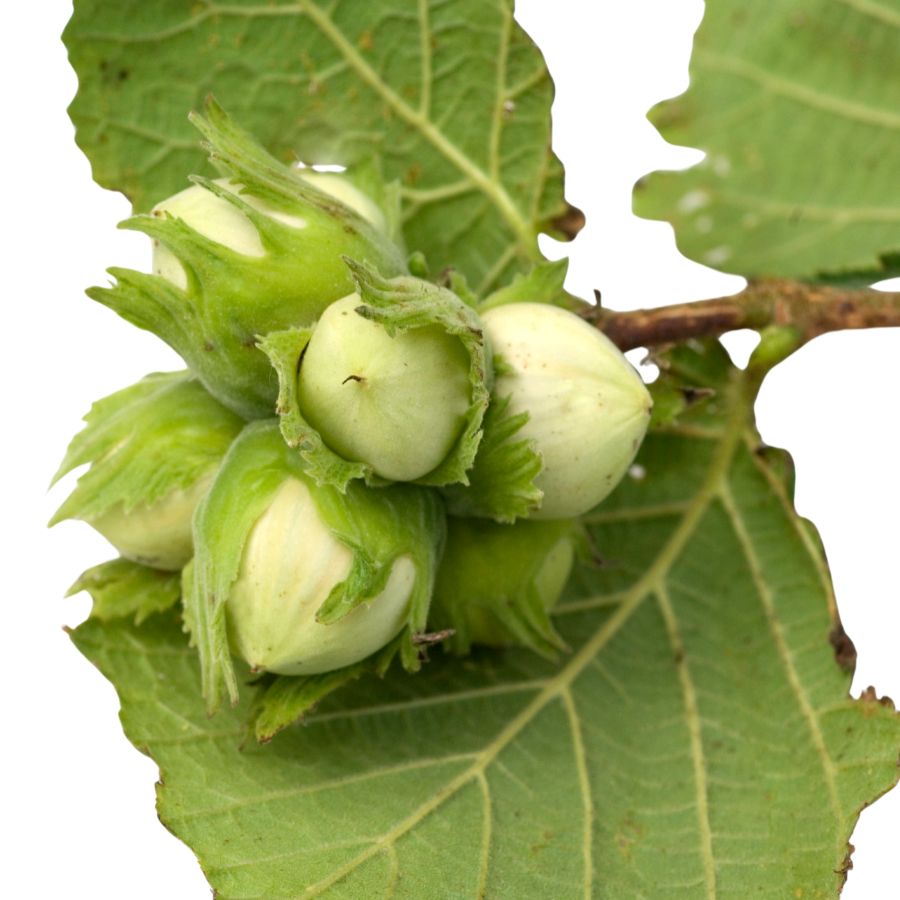
Hazelnuts grow on deciduous shrubs that reach 8-15 feet tall with multiple stems forming loose thickets. The nuts develop in clusters of 2-5, surrounded by distinctive leafy husks with ragged edges.
The sweet, rich-flavored nuts mature in late summer to early fall, changing from green to brown inside their protective husks. Wild hazelnuts are smaller than commercial varieties but offer more concentrated flavor.
Identifying features include simple, doubly-serrated leaves and male catkins that appear in early spring before the leaves emerge. Beaked hazelnut (Corylus cornuta) looks similar but has longer, beaked husks.
Wild hazelnuts contain healthy fats, protein, and essential nutrients. They can be eaten raw but develop a richer flavor when roasted. The nuts were a staple food for many Native American tribes, who also used the flexible branches for basketry and tools. Foragers must harvest promptly before squirrels and other wildlife collect the entire crop.
Wild Strawberry (Fragaria virginiana)
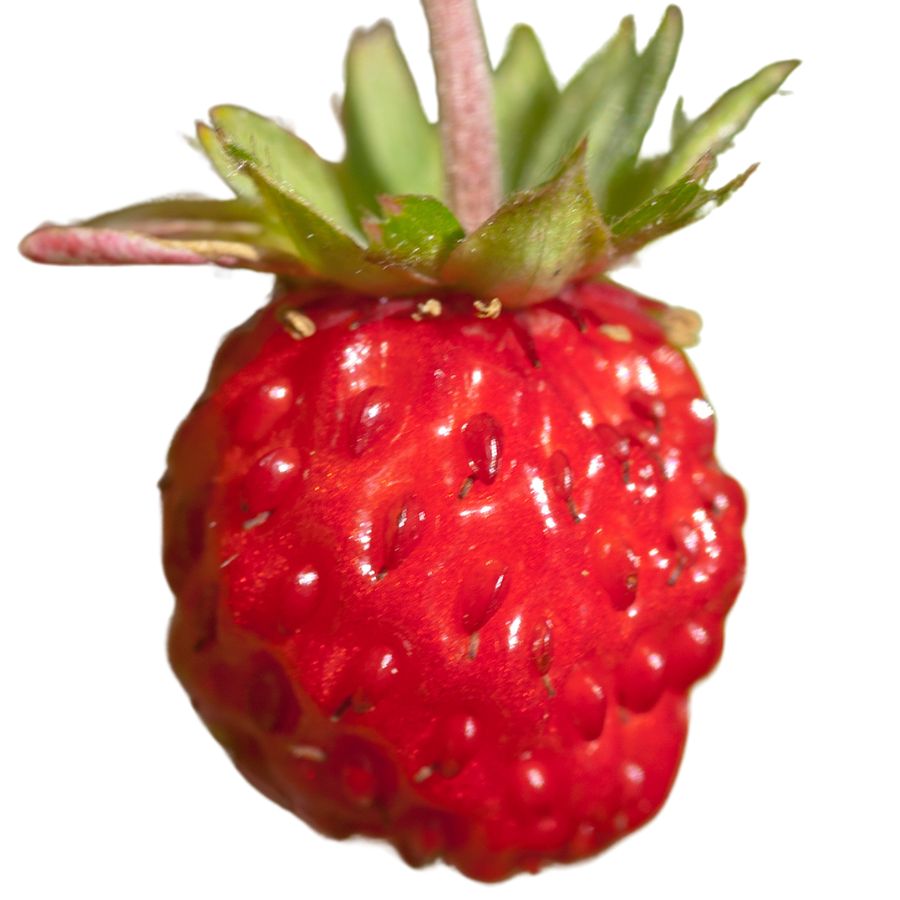
Wild strawberry, sometimes called Virginia strawberry or mountain strawberry, grows low to the ground with three-part leaves that have jagged edges. The small white flowers with yellow centers eventually give way to tiny, bright red fruits nestled close to the soil.
The fruits are sweet with a burst of tartness, and their texture is much softer than the large cultivated strawberries you find in stores. You can eat them raw, mix them into jams, or bake them into pies for a rich, fruity flavor.
Wild strawberry can sometimes be confused with mock strawberry, which has similar leaves but produces dry, flavorless fruits and yellow flowers instead of white. Always check the flower color and taste a small piece before collecting more.
Only the berries and the tender young leaves of wild strawberry are edible, with the leaves often brewed into teas. Be careful not to overharvest because these plants grow slowly and support plenty of small wildlife.
Acorn (Quercus alba)
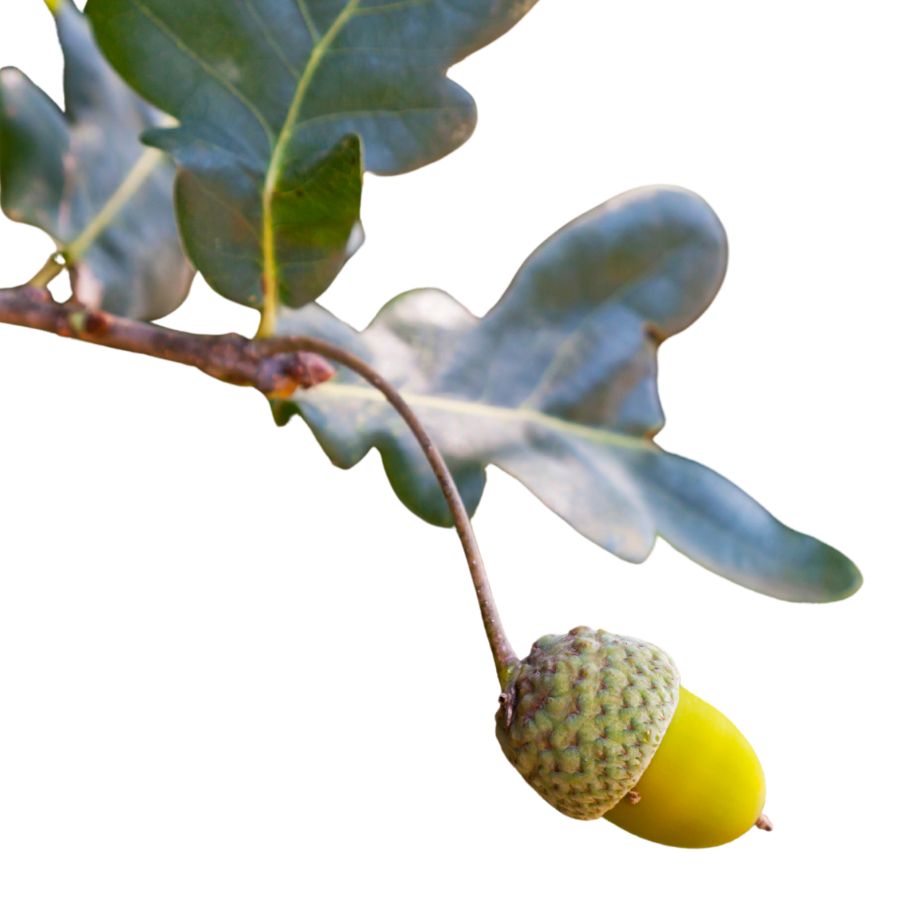
Acorns hang from oak trees in small clusters, their brown caps sitting atop oval nuts like tiny wooden hats. These nuts have been a staple food for many Native American tribes for thousands of years.
When properly prepared, acorns offer a nutty, slightly sweet flavor similar to chestnuts. The caps and shell must be removed before eating.
Raw acorns contain tannins that make them too bitter to eat directly. These tannins need to be leached out by soaking the nut meats in several changes of water.
Once processed, acorn flour can be used in breads, pancakes, and thickening stews. Some people confuse horse chestnuts with acorns, but horse chestnuts are toxic and should never be eaten.
Jerusalem Artichoke (Helianthus tuberosus)
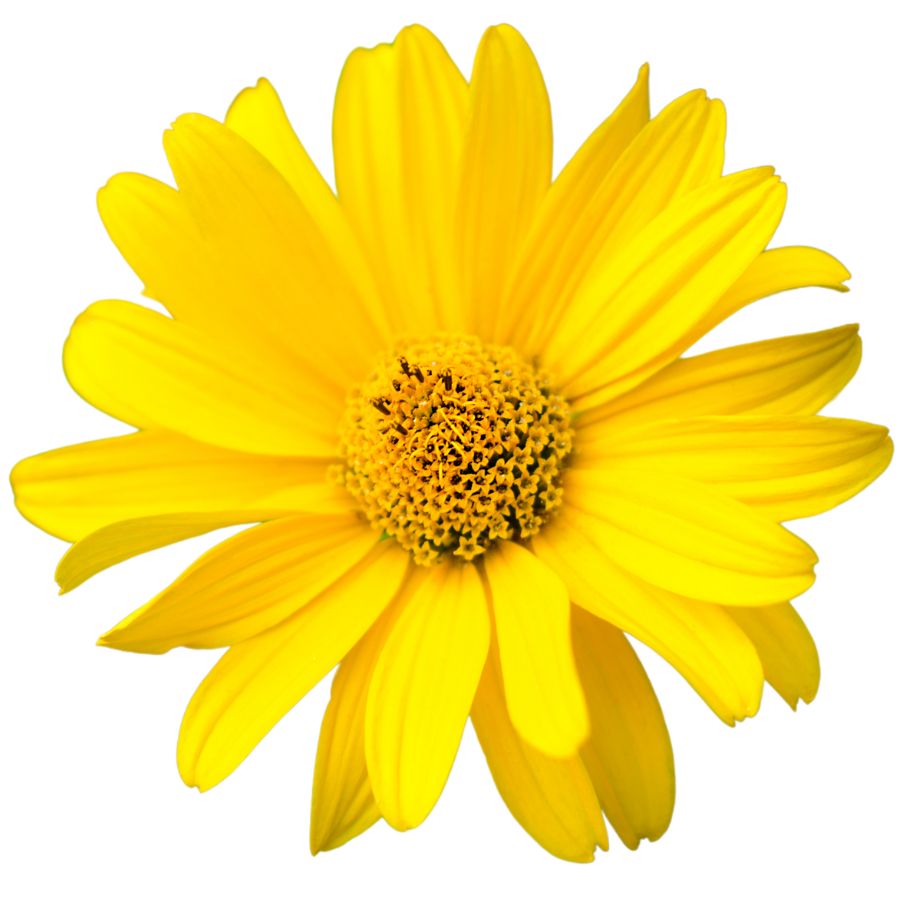
Jerusalem artichoke grows tall with sunflower-like blooms and has knobby underground tubers. The tubers are tan or reddish and look a bit like ginger root, though they belong to the sunflower family.
The part you’re after is the tuber, which has a nutty, slightly sweet flavor and a crisp texture when raw. You can roast, sauté, boil, or mash them like potatoes, and they hold their shape well in soups and stir-fries.
Some people experience gas or bloating after eating sunchokes due to the inulin they contain, so it’s a good idea to try a small amount first. Cooking them thoroughly can help reduce the chances of digestive discomfort.
Sunchokes don’t have many dangerous lookalikes, but it’s important not to confuse the plant with other sunflower relatives that don’t produce tubers. The above-ground part resembles a small sunflower, but it’s the knotted, underground tubers that are worth digging up.
Groundnut (Apios americana)

Groundnut is also called potato bean or Indian potato, and it grows as a climbing vine with clusters of pinkish-purple flowers. The part most people go for is the underground tuber, which looks a bit like a small, knobby chain of beads.
The flavor is richer than a regular potato, with a nutty, earthy taste and a dense, almost chestnut-like texture when cooked. It holds up well in soups and stews, or you can boil and mash it like a root vegetable.
Some people slice it thin and roast it until crisp, while others slow-cook it to bring out a sweeter taste. The vine also produces beans, but the root is what’s usually eaten.
There are a few vines that resemble groundnut, but many of those don’t have the same distinctive flower clusters or tend to lack the beadlike roots. Always make sure you’re digging up the right plant before cooking it.
Ostrich Fern (Matteuccia struthiopteris)
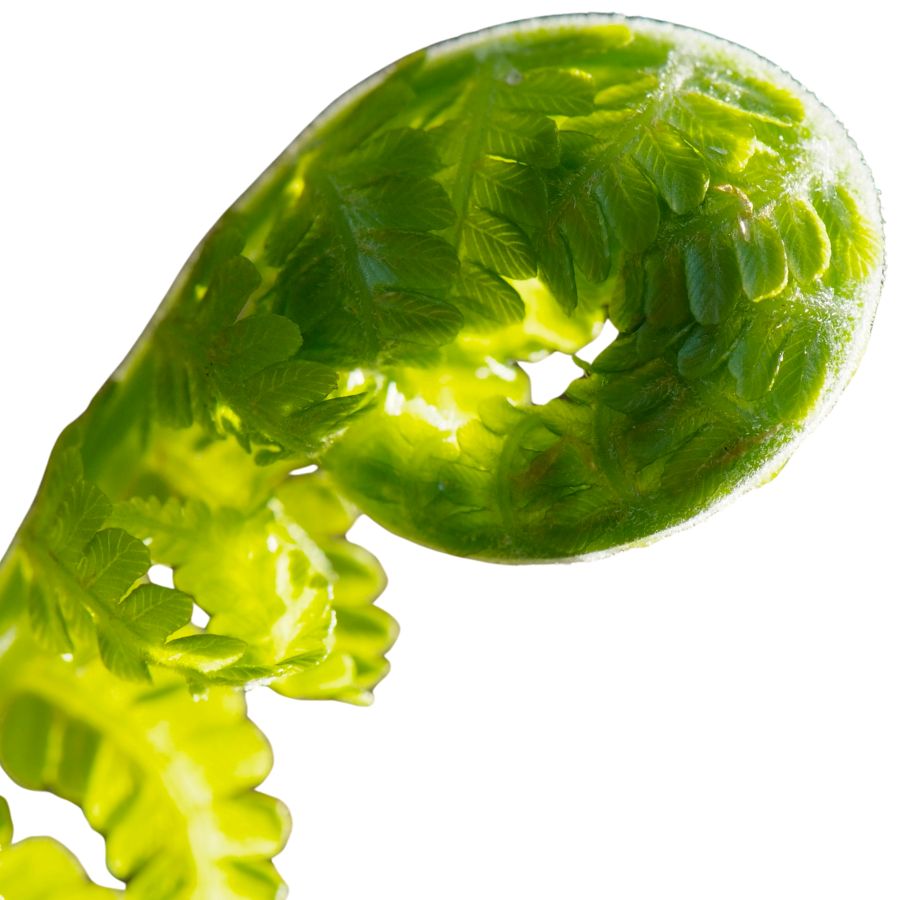
Curled tightly into spirals, ostrich fern fiddleheads emerge from the forest floor in early spring like tiny green question marks. These young fern fronds grow in circular clusters, eventually unfurling into large feathery fronds that can reach 3-6 feet tall.
Only the young fiddleheads are edible, and they must be harvested when they are still tightly curled and about 1-6 inches tall. Ostrich fern fiddleheads have a smooth stem and a deep U-shaped groove on the inside.
Many people describe their flavor as similar to asparagus, with hints of nuts and green beans. Be careful not to confuse them with other fern species, as some can cause stomach upset.
They need to be cooked thoroughly by steaming or boiling for at least 10-15 minutes. This removes certain compounds that can cause digestive discomfort.
Stinging Nettle (Urtica dioica)
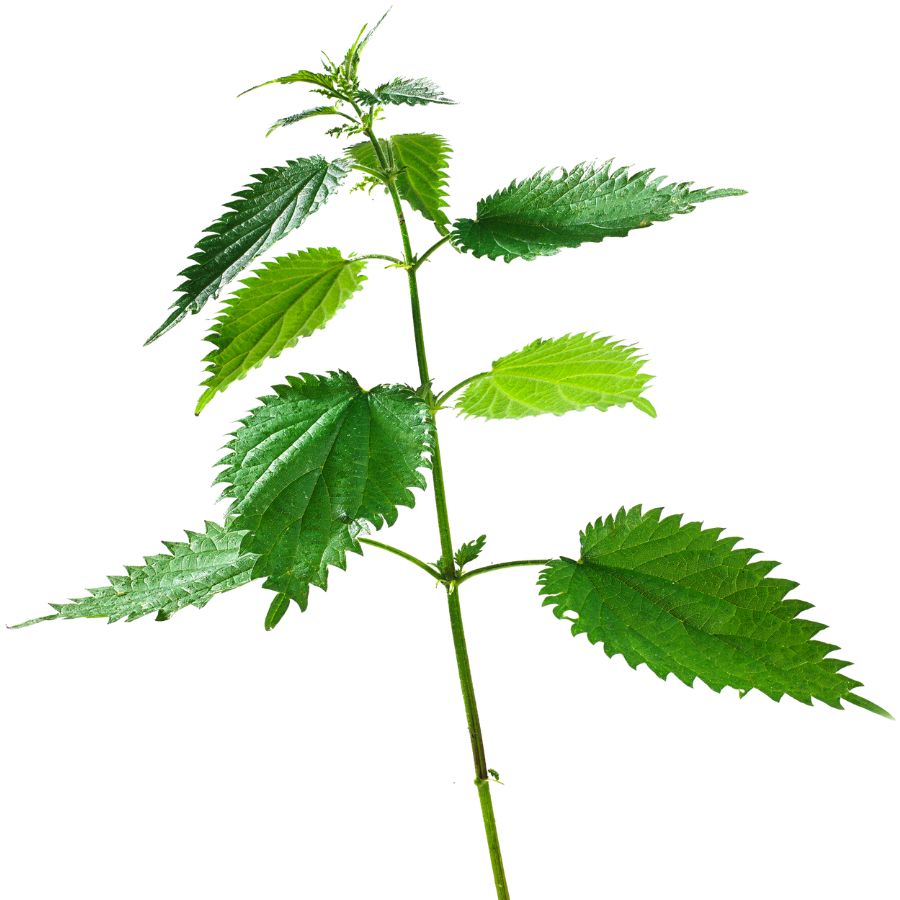
Stinging nettle is also known as burn weed or devil leaf, and it definitely earns those names. The tiny hairs on its leaves and stems can leave a painful, tingling rash if you brush against it raw, so always wear gloves when handling it.
Once it’s cooked or dried, those stingers lose their punch, and the leaves turn mild and slightly earthy in flavor. The texture softens too, making it a solid substitute for spinach in soups, pastas, or even as a simple sauté.
The young leaves and tender tops are what you want to collect. Avoid the tough lower stems and older leaves, which can be gritty or unpleasant to chew.
Some people confuse stinging nettle with purple deadnettle or henbit, but those don’t sting and have more rounded, fuzzy leaves. If the plant doesn’t make your skin react, it’s not stinging nettle.
Lamb’s Quarters (Chenopodium album)
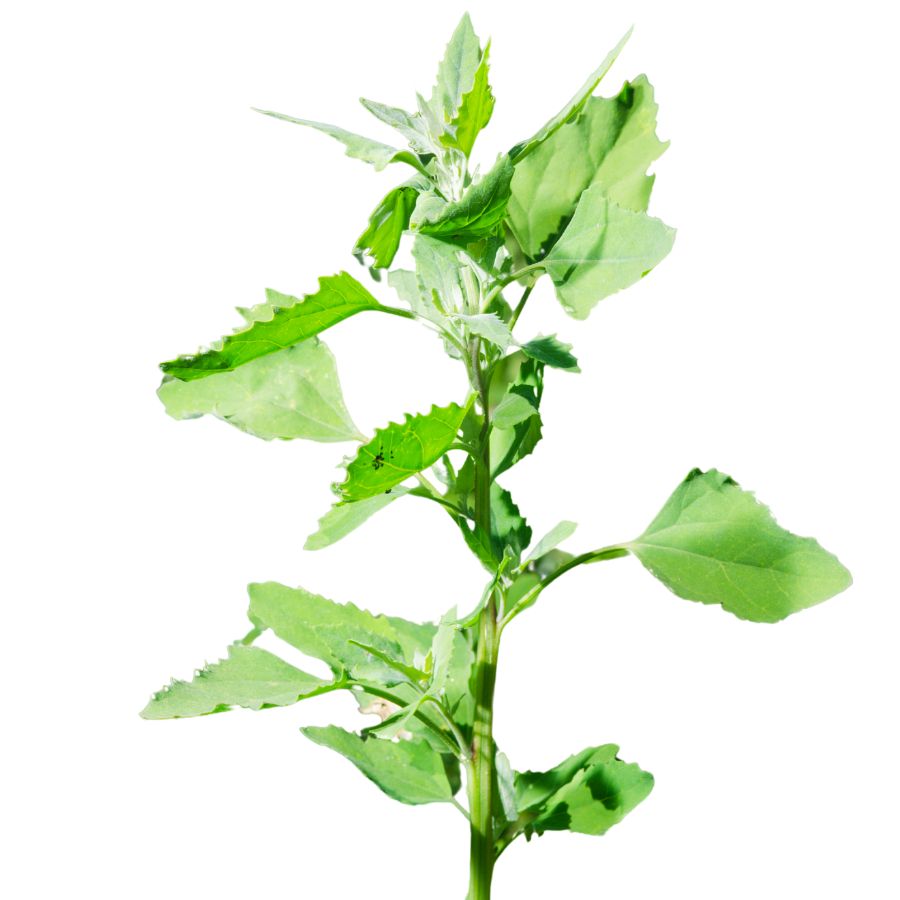
Lamb’s quarters, also called wild spinach and pigweed, has soft green leaves that often look dusted with a white, powdery coating. The leaves are shaped a little like goose feet, with slightly jagged edges and a smooth underside that feels almost velvety when you touch it.
A few plants can be confused with lamb’s quarters, like some types of nightshade, but true lamb’s quarters never have berries and its leaves are usually coated in that distinctive white bloom. Always check that the stems are grooved and not round and smooth like the poisonous lookalikes.
When you taste lamb’s quarters, you will notice it has a mild, slightly nutty flavor that gets richer when cooked. The young leaves, tender stems, and even the seeds are all edible, but you should avoid eating the older stems because they become tough and stringy.
People often sauté lamb’s quarters like spinach, blend it into smoothies, or dry the leaves for later use in soups and stews. It is also rich in oxalates, so you will want to cook it before eating large amounts to avoid any problems.
Dandelion (Taraxacum officinale)
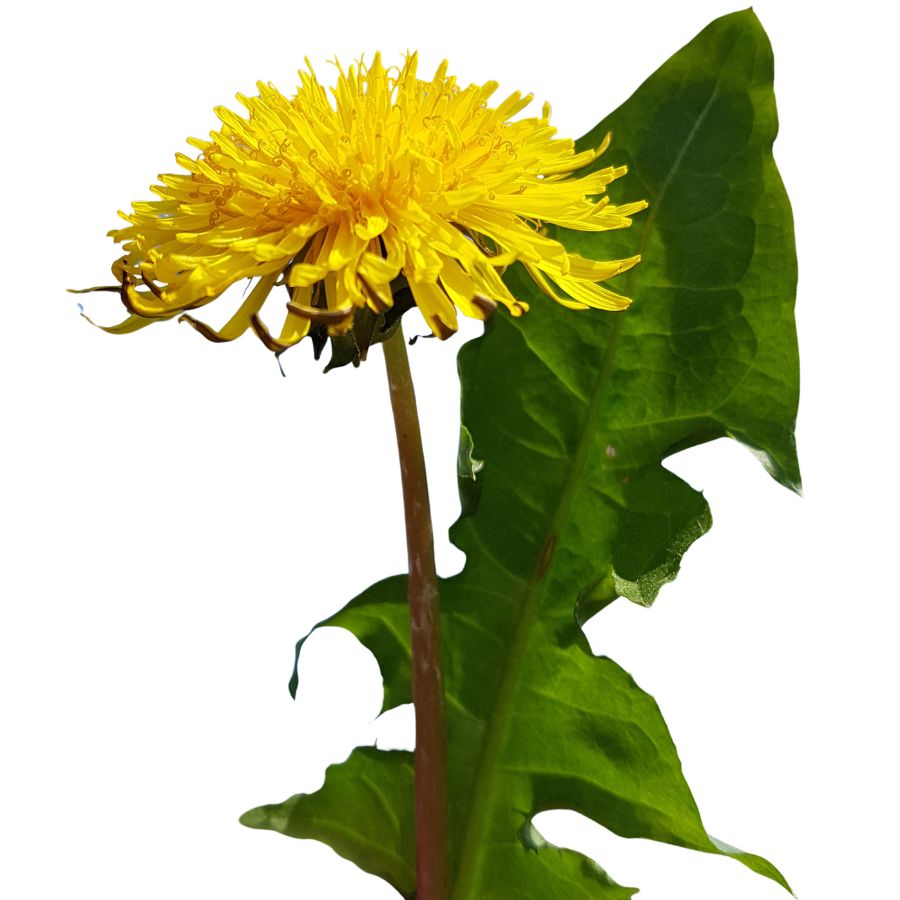
Bright yellow flowers dot lawns and fields everywhere, making the dandelion one of the most recognizable wild plants in North America. Every part of this common “weed” is edible and nutritious, from its toothed leaves to its milky taproot.
The young leaves make excellent additions to salads, offering a slightly bitter taste similar to arugula. Older leaves become more bitter but can be cooked like spinach to reduce this intensity.
The flowers can be battered and fried or used to make dandelion wine. Dandelion roots can be roasted and ground as a coffee substitute.
There are few dangerous lookalikes to worry about, though wild lettuce can appear similar but has much taller stems. Dandelions are packed with vitamins A, C, and K, plus minerals like iron and calcium.
Milkweed (Asclepias syriaca)
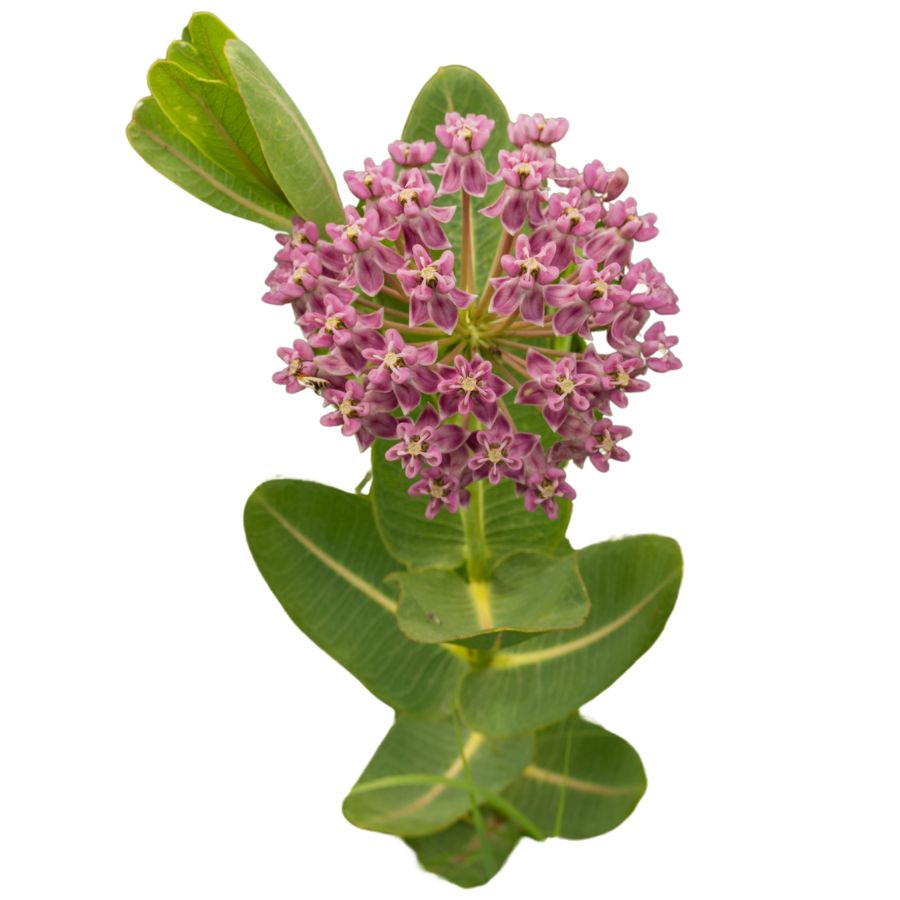
Milkweed stands tall in fields and along roadsides, its thick stems supporting large oval leaves that release a milky sap when broken. During summer, it produces distinctive round clusters of pink to purple fragrant flowers.
The young shoots, flower buds, and young seed pods are edible parts of this plant. The shoots taste similar to asparagus when cooked, while the flower buds resemble broccoli.
Proper preparation is essential as milkweed contains compounds that need to be removed through cooking. Always boil the plant parts in water, discarding the water at least once during cooking.
Dogbane is a common lookalike that is toxic, but can be distinguished by its reddish stem and lack of milky sap in the leaves. Monarch butterflies depend on milkweed for survival, so harvest sustainably.
Wild Mint (Mentha arvensis)

You’re probably familiar with the strong scent of wild mint, which comes from the essential oils concentrated in its leaves. It has square stems, lance-shaped leaves with slightly toothed edges, and pale lilac flower clusters.
The fresh leaves can be eaten raw, cooked into soups, or muddled into drinks for a crisp flavor. Expect a bright, menthol-like kick with a hint of sweetness.
False mint species like purple deadnettle grow in similar spots but lack the menthol smell and have fuzzy leaves. If the plant doesn’t smell like mint, it probably isn’t.
Stick to the leaves and younger stems for eating because the woody stalks aren’t palatable. Wild mint also holds up well when dried and stored for tea or seasoning.
Yarrow (Achillea millefolium)
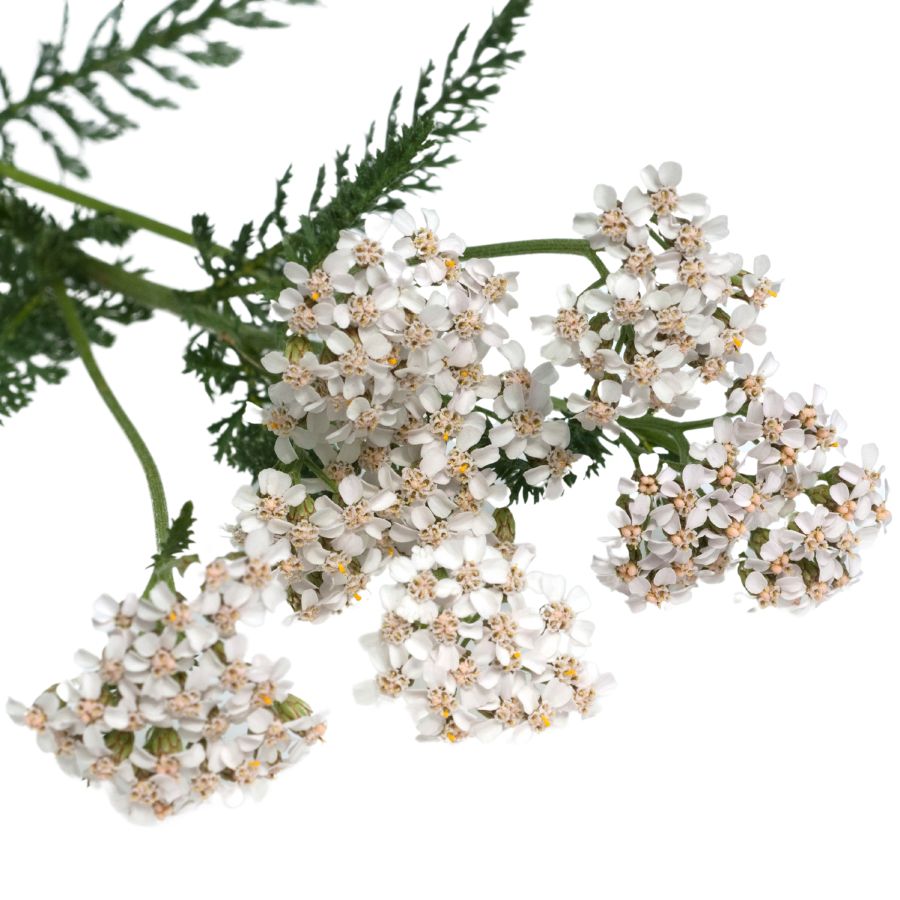
Yarrow grows as a resilient perennial herb with feathery, fern-like leaves and clusters of tiny white flowers that form flat-topped umbels. The plant has a strong, somewhat spicy aroma and can reach heights of 1-3 feet when mature.
Identifying yarrow is relatively simple due to its distinctive foliage that resembles delicate ferns with leaves divided into many small, fine segments. The entire above-ground portion of yarrow is edible, though the leaves are most commonly used.
Yarrow has been used for thousands of years as a medicinal herb to stop bleeding, reduce fever, and treat colds. Many foragers collect it to make teas that can help with digestion and inflammation.
Be careful not to confuse yarrow with poison hemlock or Queen Anne’s lace. Yarrow leaves are much finer and more feathery than these dangerous lookalikes. The plant also has a distinct scent that sets it apart.
Toxic Plants That Look Like Edible Plants
There are plenty of wild edibles to choose from, but some toxic native plants closely resemble them. Mistaking the wrong one can lead to severe illness or even death, so it’s important to know exactly what you’re picking.
Poison Hemlock (Conium maculatum)
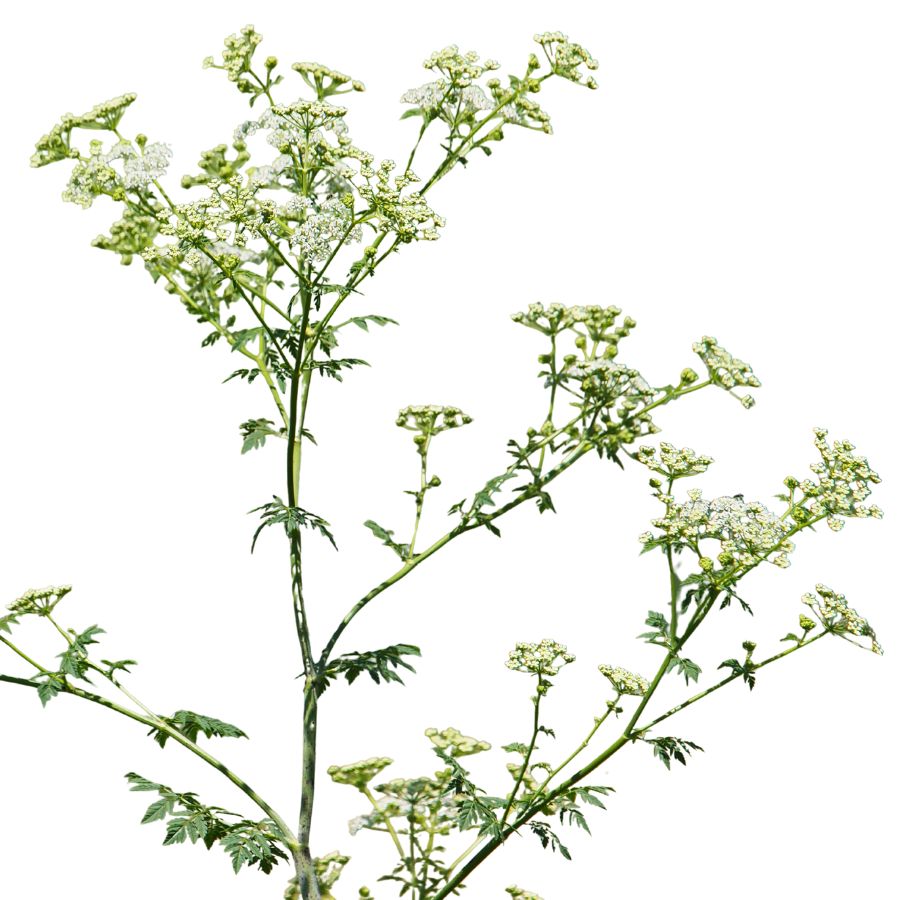
Often mistaken for: Wild carrot (Daucus carota)
Poison hemlock is a tall plant with lacy leaves and umbrella-like clusters of tiny white flowers. It has smooth, hollow stems with purple blotches and grows in sunny places like roadsides, meadows, and stream banks.
Unlike wild carrot, which has hairy stems and a dark central floret, poison hemlock has a musty odor and no flower center spot. It’s extremely toxic; just a small amount can be fatal, and even touching the sap can irritate the skin.
Water Hemlock (Cicuta spp.)
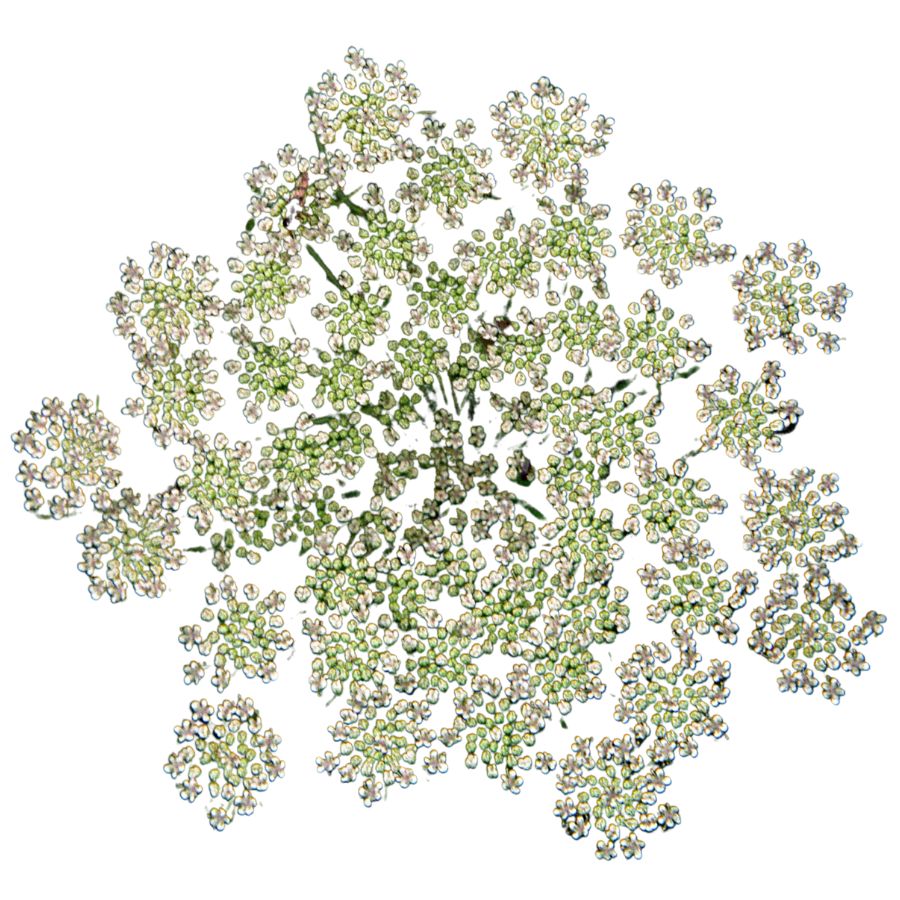
Often mistaken for: Wild parsnip (Pastinaca sativa) or wild celery (Apium spp.)
Water hemlock is a tall, branching plant with umbrella-shaped clusters of small white flowers. It grows in wet places like stream banks, marshes, and ditches, with stems that often show purple streaks or spots.
It can be confused with wild parsnip or wild celery, but its thick, hollow roots have internal chambers and release a yellow, foul-smelling sap when cut. Water hemlock is the most toxic plant in North America, and just a small amount can cause seizures, respiratory failure, and death.
False Hellebore (Veratrum viride)
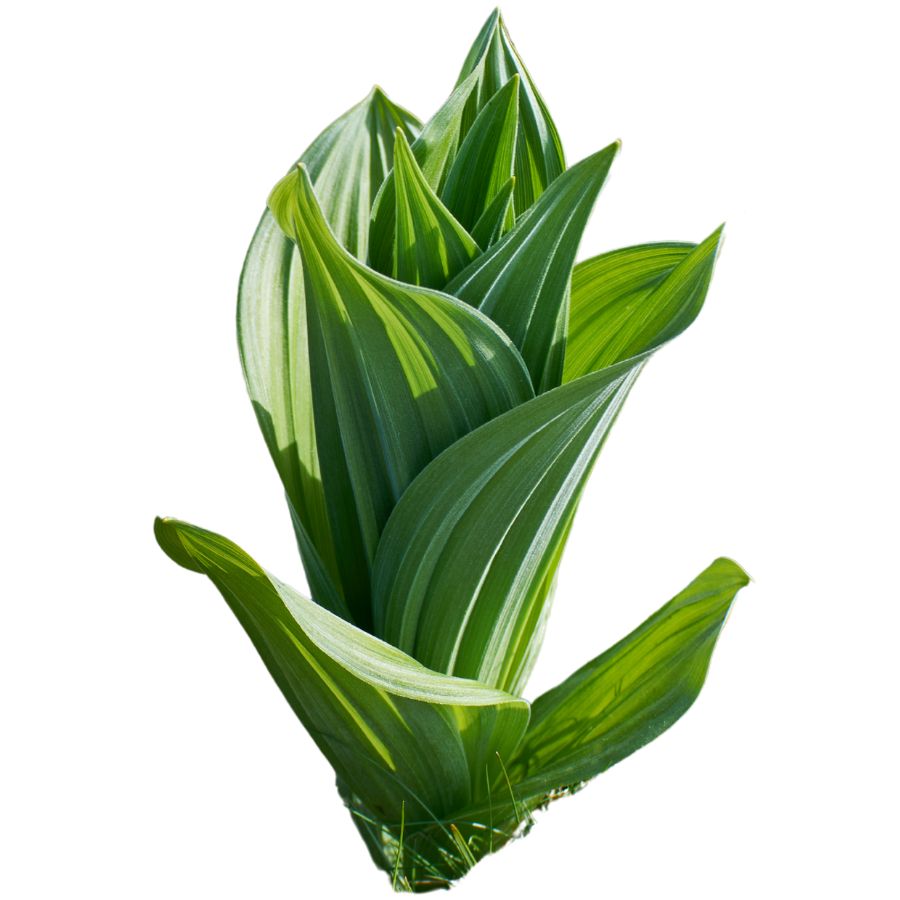
Often mistaken for: Ramps (Allium tricoccum)
False hellebore is a tall plant with broad, pleated green leaves that grow in a spiral from the base, often appearing early in spring. It grows in moist woods, meadows, and along streams.
It’s commonly mistaken for ramps, but ramps have a strong onion or garlic smell, while false hellebore is odorless and later grows a tall flower stalk. The plant is highly toxic, and eating any part can cause nausea, a slowed heart rate, and even death due to its alkaloids that affect the nervous and cardiovascular systems.
Death Camas (Zigadenus spp.)
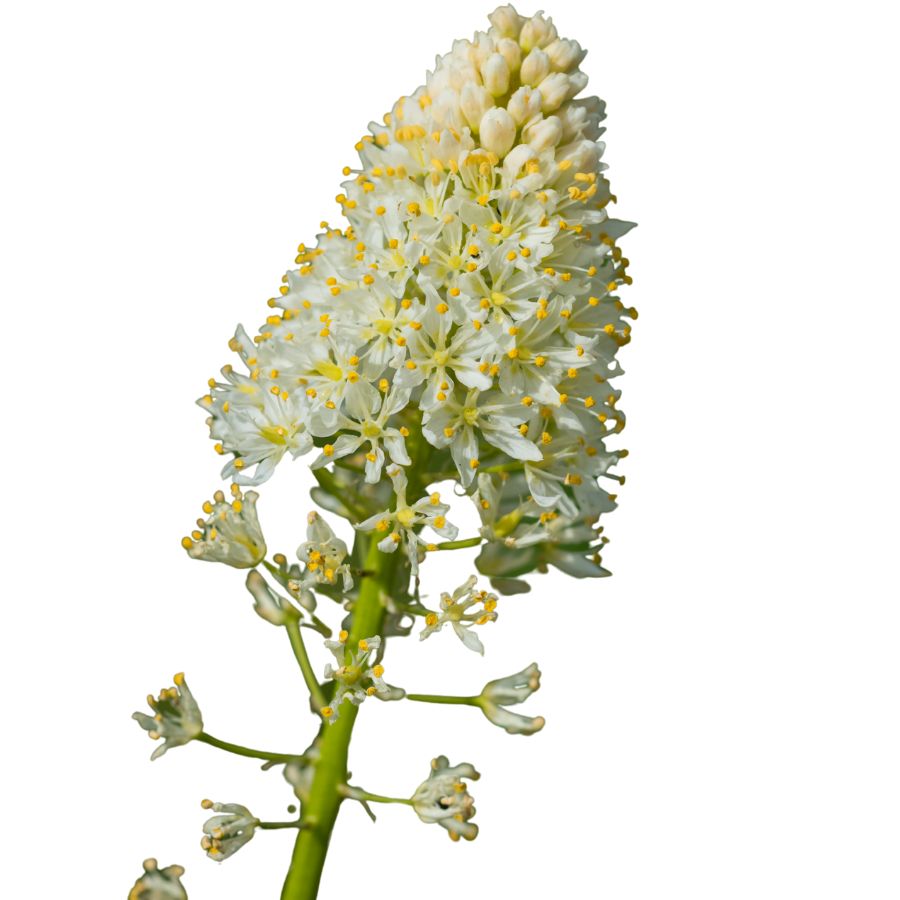
Often mistaken for: Wild onion or wild garlic (Allium spp.)
Death camas is a slender, grass-like plant that grows from underground bulbs and is found in open woods, meadows, and grassy hillsides. It has small, cream-colored flowers in loose clusters atop a tall stalk.
It’s often confused with wild onion or wild garlic due to their similar narrow leaves and habitats, but only Allium plants have a strong onion or garlic scent, while death camas has none. The plant is extremely poisonous, especially the bulbs, and even a small amount can cause nausea, vomiting, a slowed heartbeat, and potentially fatal respiratory failure.
Buckthorn Berries (Rhamnus spp.)
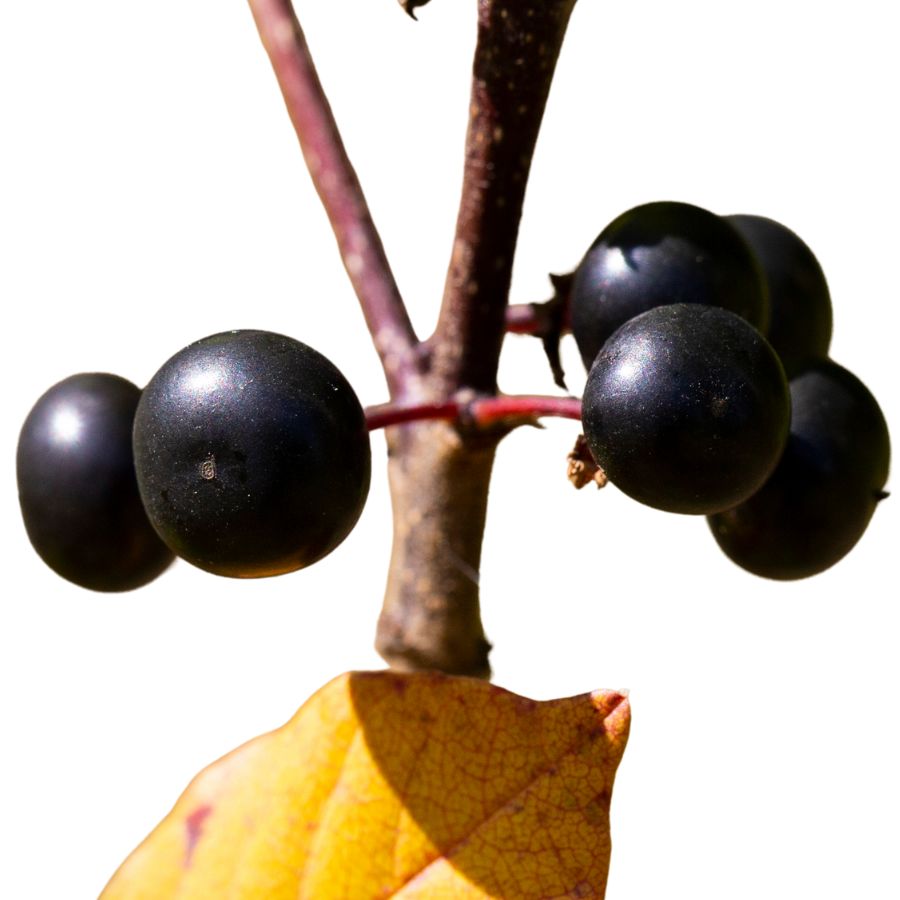
Often mistaken for: Elderberries (Sambucus spp.)
Buckthorn is a shrub or small tree often found along woodland edges, roadsides, and disturbed areas. It produces small, round berries that ripen to dark purple or black and usually grow in loose clusters.
These berries are sometimes mistaken for elderberries and other wild fruits, which also grow in dark clusters, but elderberries form flat-topped clusters on reddish stems while buckthorn berries are more scattered. Buckthorn berries are unsafe to eat as they contain compounds that can cause cramping, vomiting, and diarrhea, and large amounts may lead to dehydration and serious digestive problems.
Mayapple (Podophyllum peltatum)
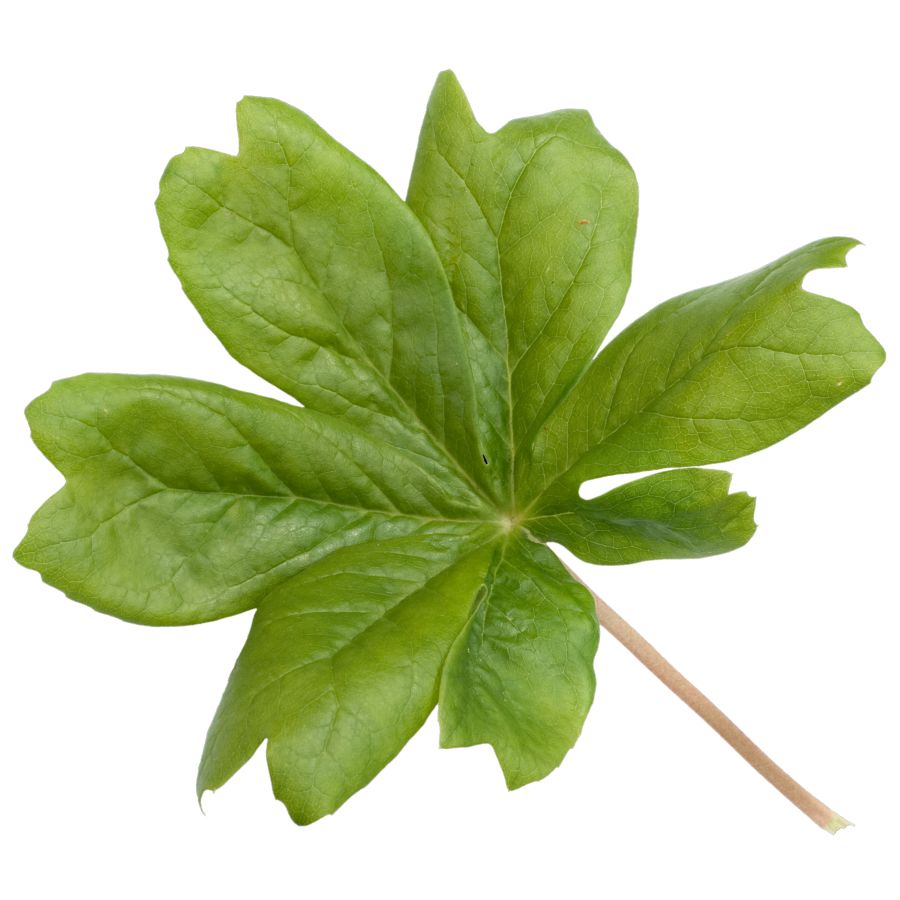
Often mistaken for: Wild grapes (Vitis spp.)
Mayapple is a low-growing plant found in shady forests and woodland clearings. It has large, umbrella-like leaves and produces a single pale fruit hidden beneath the foliage.
The unripe fruit resembles a small green grape, causing confusion with wild grapes, which grow in woody clusters on vines. All parts of the mayapple are toxic except the fully ripe, yellow fruit, which is only safe in small amounts. Eating unripe fruit or other parts can lead to nausea, vomiting, and severe dehydration.
Virginia Creeper (Parthenocissus quinquefolia)
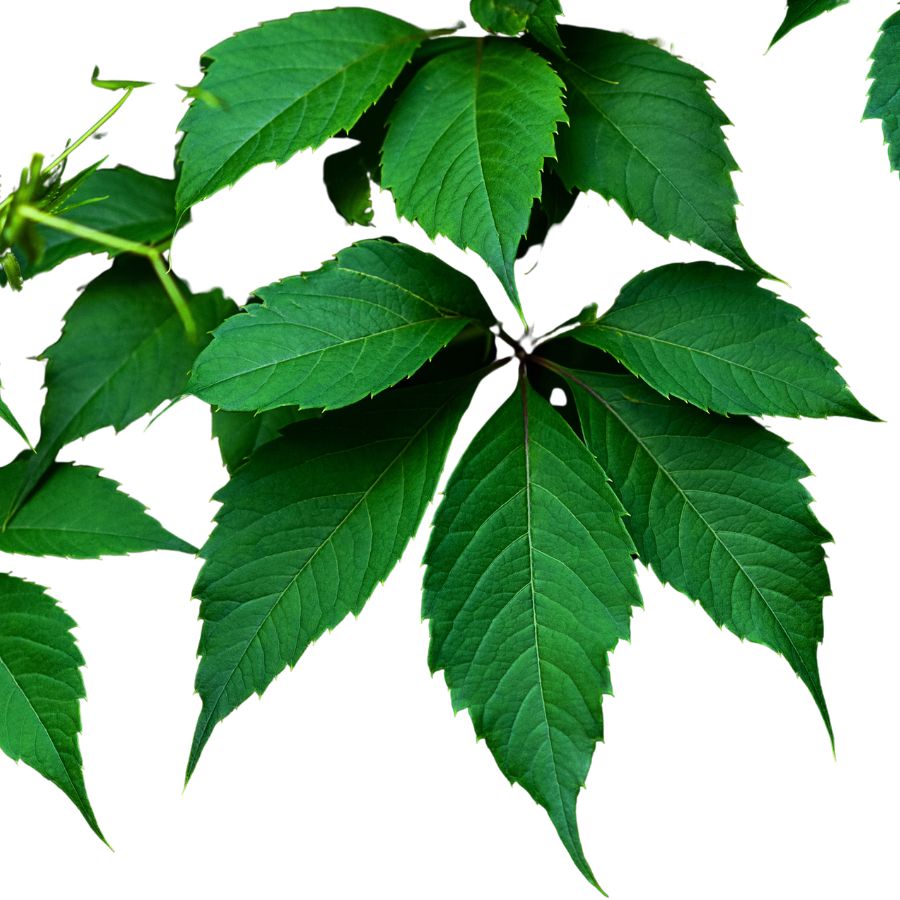
Often mistaken for: Wild grapes (Vitis spp.)
Virginia creeper is a fast-growing vine found on fences, trees, and forest edges. It has five leaflets per stem and produces small, bluish-purple berries from late summer to fall.
It’s often confused with wild grapes since both are climbing vines with similar berries, but grapevines have large, lobed single leaves and tighter fruit clusters. Virginia creeper’s berries are toxic to humans and contain oxalate crystals that can cause nausea, vomiting, and throat irritation.
Castor Bean (Ricinus communis)
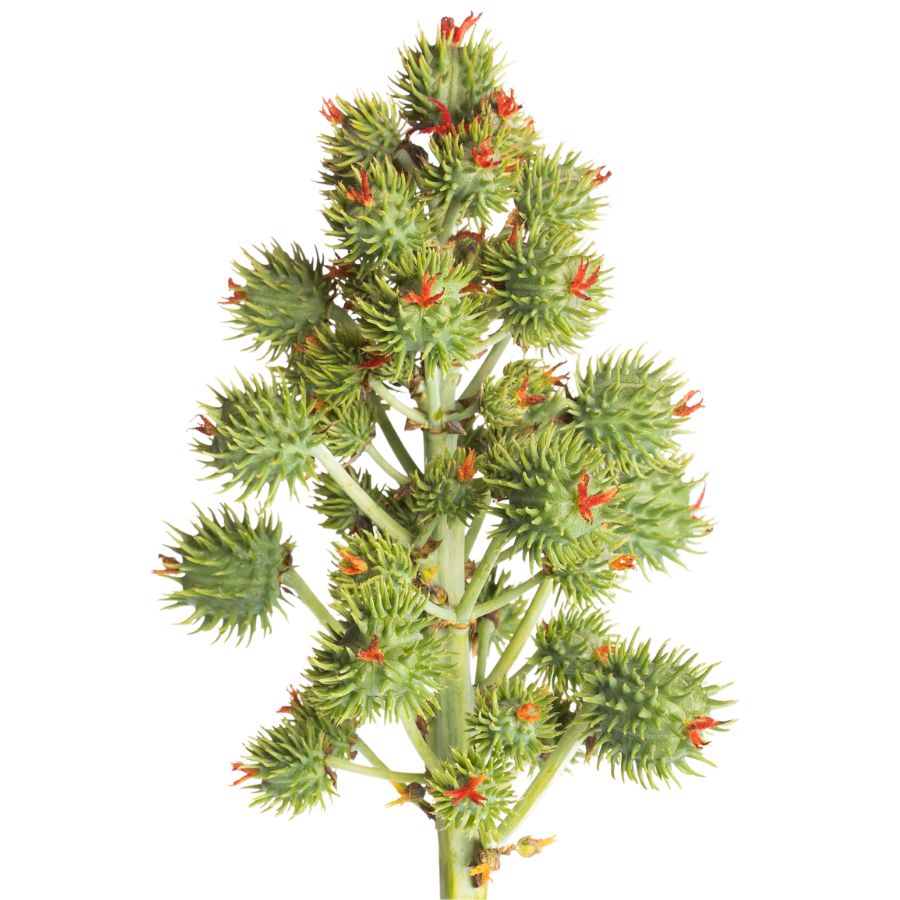
Often mistaken for: Wild rhubarb (Rumex spp. or Rheum spp.)
Castor bean is a bold plant with large, lobed leaves and tall red or green stalks, often found in gardens, along roadsides, and in disturbed areas in warmer regions in the US. Its red-tinged stems and overall size can resemble wild rhubarb to the untrained eye.
Unlike rhubarb, castor bean plants produce spiny seed pods containing glossy, mottled seeds that are extremely toxic. These seeds contain ricin, a deadly compound even in small amounts. While all parts of the plant are toxic, the seeds are especially dangerous and should never be handled or ingested.
A Quick Reminder
Before we get into the specifics about where and how to find these mushrooms, we want to be clear that before ingesting any wild mushroom, it should be identified with 100% certainty as edible by someone qualified and experienced in mushroom identification, such as a professional mycologist or an expert forager. Misidentification of mushrooms can lead to serious illness or death.
All mushrooms have the potential to cause severe adverse reactions in certain individuals, even death. If you are consuming mushrooms, it is crucial to cook them thoroughly and properly and only eat a small portion to test for personal tolerance. Some people may have allergies or sensitivities to specific mushrooms, even if they are considered safe for others.
The information provided in this article is for general informational and educational purposes only. Foraging for wild mushrooms involves inherent risks.
How to Get the Best Results Foraging
Safety should always come first when it comes to foraging. Whether you’re in a rural forest or a suburban greenbelt, knowing how to harvest wild foods properly is a key part of staying safe and respectful in the field.
Always Confirm Plant ID Before You Harvest Anything
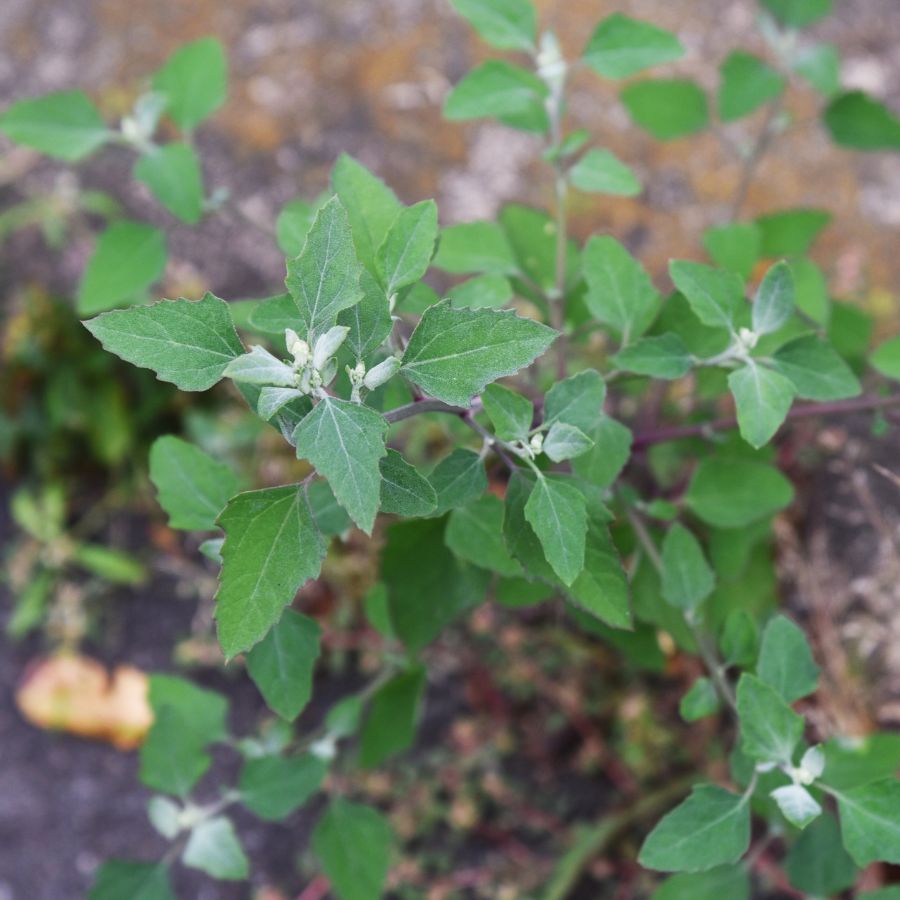
Knowing exactly what you’re picking is the most important part of safe foraging. Some edible plants have nearly identical toxic lookalikes, and a wrong guess can make you seriously sick.
Use more than one reliable source to confirm your ID, like field guides, apps, and trusted websites. Pay close attention to small details. Things like leaf shape, stem texture, and how the flowers or fruits are arranged all matter.
Not All Edible Plants Are Safe to Eat Whole
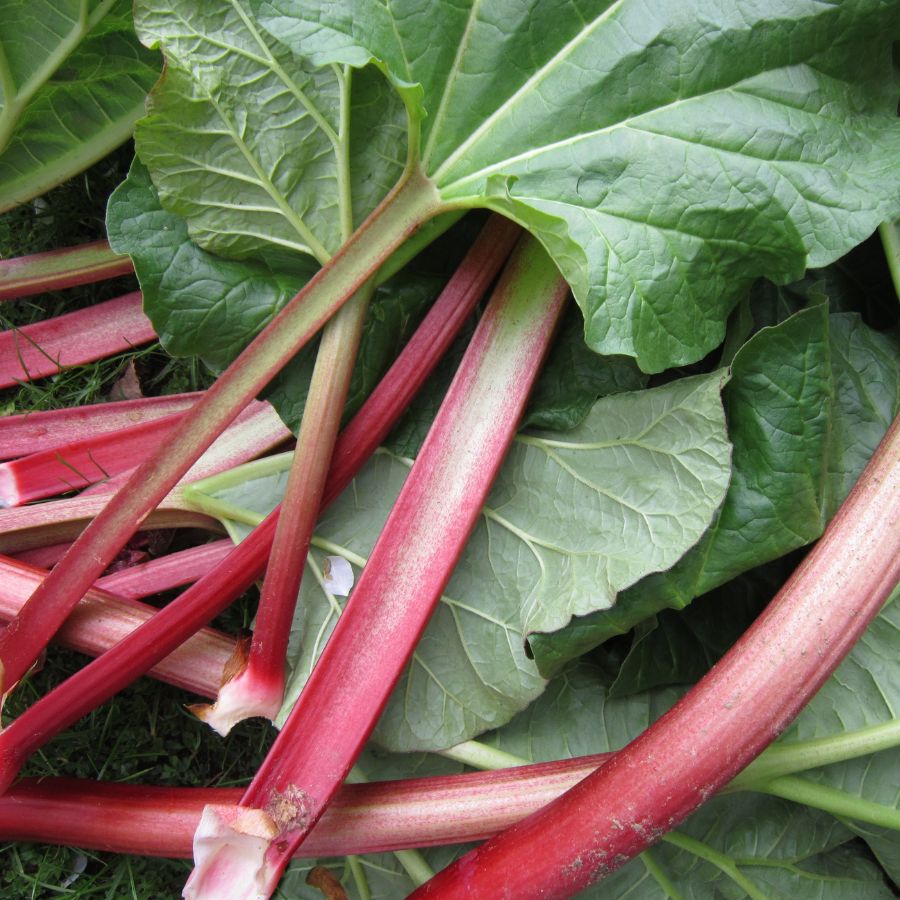
Just because a plant is edible doesn’t mean every part of it is safe. Some plants have leaves, stems, or seeds that can be toxic if eaten raw or prepared the wrong way.
For example, pokeweed is only safe when young and properly cooked, while elderberries need to be heated before eating. Rhubarb stems are fine, but the leaves are poisonous. Always look up which parts are edible and how they should be handled.
Avoid Foraging in Polluted or Contaminated Areas
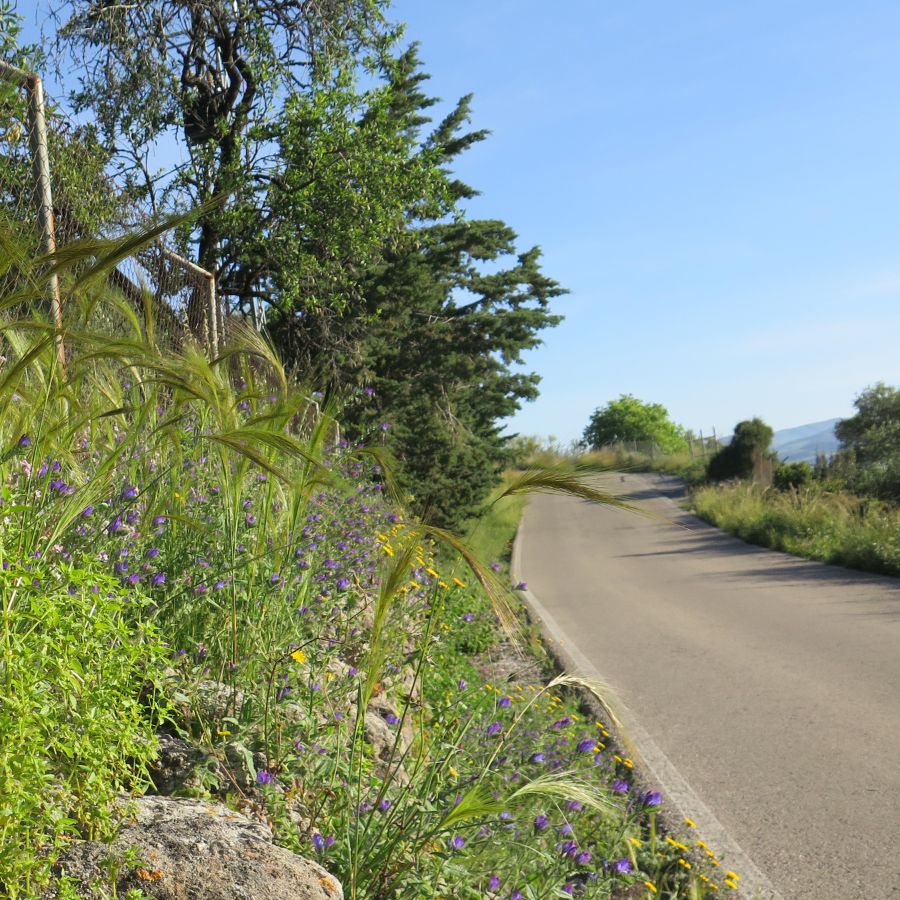
Where you forage matters just as much as what you pick. Plants growing near roads, buildings, or farmland might be coated in chemicals or growing in polluted soil.
Even safe plants can take in harmful substances from the air, water, or ground. Stick to clean, natural areas like forests, local parks that allow foraging, or your own yard when possible.
Don’t Harvest More Than What You Need
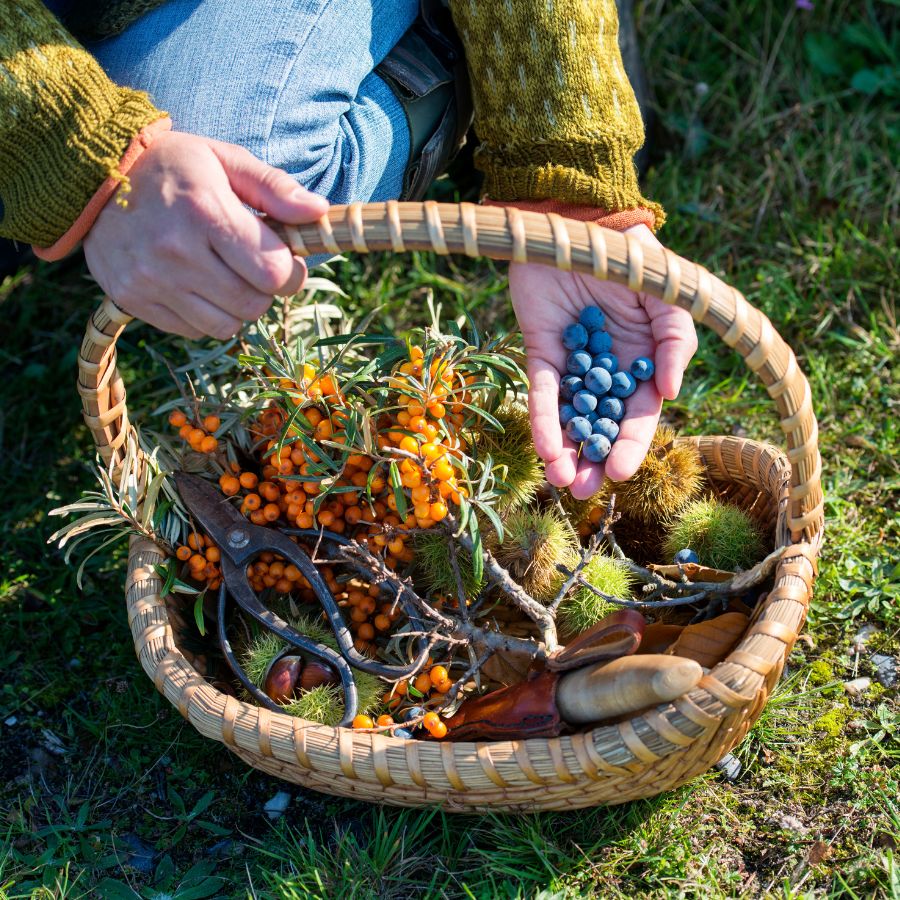
When you forage, take only what you plan to use. Overharvesting can hurt local plant populations and reduce future growth in that area.
Leaving plenty behind helps plants reproduce and supports wildlife that depends on them. It also ensures other foragers have a chance to enjoy the same resources.
Protect Yourself and Your Finds with Proper Foraging Gear

Having the right tools makes foraging easier and safer. Gloves protect your hands from irritants like stinging nettle, and a good knife or scissors lets you harvest cleanly without damaging the plant.
Use a basket or breathable bag to carry what you collect. Plastic bags hold too much moisture and can cause your greens to spoil before you get home.
This forager’s toolkit covers the essentials for any level of experience.
Watch for Allergic Reactions When Trying New Wild Foods

Even if a wild plant is safe to eat, your body might react to it in unexpected ways. It’s best to try a small amount first and wait to see how you feel.
Be extra careful with kids or anyone who has allergies. A plant that’s harmless for one person could cause a reaction in someone else.
Check Local Rules Before Foraging on Any Land
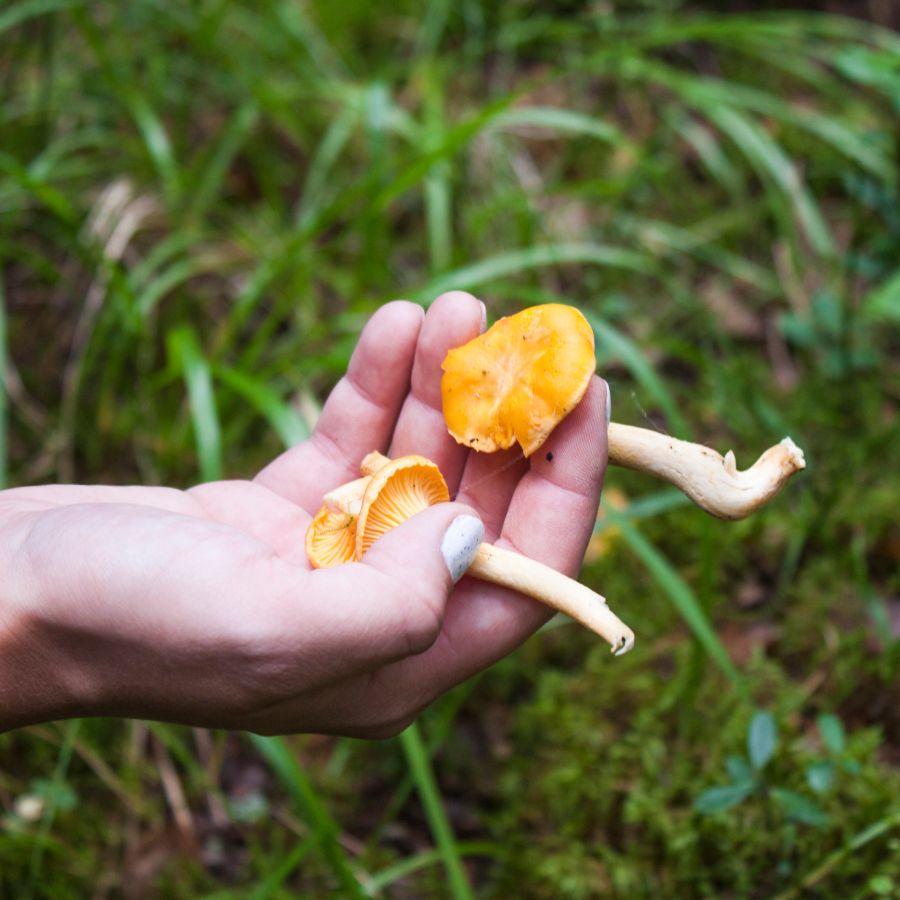
Before you start foraging, make sure you know the rules for the area you’re in. What’s allowed in one spot might be completely off-limits just a few miles away.
Some public lands permit limited foraging, while others, like national parks, usually don’t allow it at all. If you’re on private property, always get permission first.
Before you head out
Before embarking on any foraging activities, it is essential to understand and follow local laws and guidelines. Always confirm that you have permission to access any land and obtain permission from landowners if you are foraging on private property. Trespassing or foraging without permission is illegal and disrespectful.
For public lands, familiarize yourself with the foraging regulations, as some areas may restrict or prohibit the collection of mushrooms or other wild foods. These regulations and laws are frequently changing so always verify them before heading out to hunt. What we have listed below may be out of date and inaccurate as a result.
Where to Find Forageables in the State
There is a range of foraging spots where edible plants grow naturally and often in abundance:
| Plant | Locations |
|---|---|
| Wild Leek (Allium tricoccum) | – Maplewood State Park near Pelican Rapids – Jay Cooke State Park woodlands – Afton State Park hillside forest |
| Wild Rice (Zizania palustris) | – Mille Lacs Lake shoreline – Rice Lake near Aitkin – Tamarac Wildlife Management Area |
| Chokecherry (Prunus virginiana) | – Glendalough State Park – Cannon Valley Trail – Lebanon Hills Regional Park |
| Wild Plum (Prunus americana) | – Savanna Portage State Park – Itasca State Park trails – Charles A. Lindbergh State Park |
| Juneberry (Amelanchier alnifolia) | – Detroit Lakes woodlands – Lake Bemidji State Park nature trails – Nerstrand Big Woods edge |
| Highbush Cranberry (Viburnum trilobum) | – Carlos Avery WMA – Gooseberry Falls vicinity – Big Stone Lake shoreline woods |
| Staghorn Sumac (Rhus typhina) | – Lake Maria State Park – Cuyuna Country SRA – Root River Trail bluff edges |
| Eastern White Pine (Pinus strobus) | – Temperance River State Park – Banning State Park – Lake Itasca forest trails |
| White Spruce (Picea glauca) | – Judge C.R. Magney State Park – Grand Portage trail corridor – Kabetogama State Forest |
| Burdock (Arctium lappa) | – Eloise Butler Wildflower Garden – Hastings River Flats Park – St. Cloud Quarry Park |
| Cattail (Typha latifolia) | – Carlos Avery WMA marsh – Lake Nokomis wetland fringe – Moorhead Riverfront Park |
| Jerusalem Artichoke (Helianthus tuberosus) | – Crosby Farm Regional Park – Winona bluffs edge – Fergus Falls prairie paths |
| Evening Primrose (Oenothera biennis) | – Sherburne WMA – Minnesota Valley Trail – Lake Bronson State Park field edges |
| Milkweed (Asclepias syriaca) | – Crow-Hassan Park Reserve – Prairie Wetlands Learning Center – Pine Bend Bluffs SNA |
| Lamb’s Quarters (Chenopodium album) | – Silver Lake Edible Garden in Rochester – Park Point Nature Trail in Duluth – New Ulm riverbanks |
| Wood Sorrel (Oxalis spp.) | – Jay Cooke shaded rocks – French Regional Park – Gooseberry River forest paths |
| Chickweed (Stellaria media) | – Winona riverside trails – St. Paul backyard gardens – Moorhead city parks |
| Stinging Nettle (Urtica dioica) | – West River Parkway near Franklin Ave – Cloquet riverbanks – Mankato woodland trails |
| Wild Mint (Mentha arvensis) | – Lake Pepin backwaters – Bemidji State Park wet areas – Brainerd creek beds |
| Yarrow (Achillea millefolium) | – Bluestem Prairie SNA near Glyndon – Mille Lacs Kathio trails – Duluth hill meadows |
| Wintergreen (Gaultheria procumbens) | – Pine forests near Ely – Isabella area trails – Sand Dunes State Forest |
| Wild Bergamot (Monarda fistulosa) | – Prairie Smoke Dunes SNA – Blue Mounds prairie edge – Alexandria tallgrass areas |
| Watercress (Nasturtium officinale) | – Stream in Forestville State Park – Brown’s Creek near Stillwater – Tettegouche brook edges |
| Wild Ginger (Asarum canadense) | – Moose Lake shaded trails – Nerstrand Big Woods – Frontenac State Park hollows |
| Ostrich Fern (Matteuccia struthiopteris) | – Le Sueur River bottoms – Heikkala Lake Road forest corridor near Cloquet – Rum River woodlands |
| Thimbleberry (Rubus parviflorus) | – Cascade River State Park – Cook County Road 60 Trail near Taconite Harbor – Wanless Road forest edge near Isabella |
| Black Raspberry (Rubus occidentalis) | – Minnehaha Falls Park edges – Northfield bike trails – Whitewater State Park paths |
| Blackberry (Rubus allegheniensis) | – Forestville/Mystery Cave fields – Pine City woodland edge – Coon Rapids Dam area |
| Wild Strawberry (Fragaria virginiana) | – North Shore rocky meadows – Big Lake State Forest – Fergus Falls glacial hills |
| Groundnut (Apios americana) | – Mississippi backwaters near Wabasha – Rice Lake WMA – Fort Snelling shoreline thickets |
| Spicebush (Lindera benzoin) | – Forest edge in St. Croix State Park – Hidden Falls Regional Park – Minneopa woodlands |
| Hazelnut (Corylus americana) | – Sibley State Park – Red Wing bluffs – Aitkin woodland paths |
| Hickory (Carya ovata) | – Root River Valley – Frontenac State Park woods – Hastings oak-savanna edge |
| Acorn (Quercus alba) | – Battle Creek Regional Park – Mankato hills – Buffalo River State Park grove |
| Sheep Sorrel (Rumex acetosella) | – Lakeshore Park at White Bear Lake – Mesabi Trailhead near Eveleth – Owatonna roadside fields |
| Dandelion (Taraxacum officinale) | – Apple Valley neighborhood green spaces – Powderhorn Park sidewalk edges – Rural edge trails near St. Olaf Avenue, Northfield |
| Plantain (Plantago major) | – Trail edges in Eagan – Fargo-Moorhead roadside paths – Rochester park lawns |
| Curly Dock (Rumex crispus) | – Farmland edges near Austin – Floodplains in Stillwater – Bennett Park drainage ditches in Hibbing |
| Cranberry (Vaccinium oxycoccos) | – Wabu Woods bog area near Grand Rapids – Big Bog State Recreation Area – Toimi Creek Bog near Embarrass |
Peak Foraging Seasons
Different edible plants grow at different times of year, depending on the season and weather. Timing your search makes all the difference.
Spring
Spring brings a fresh wave of wild edible plants as the ground thaws and new growth begins:
| Plant | Months | Best weather conditions |
|---|---|---|
| Wild leek (Allium tricoccum) | April–May | cool, damp forest floor |
| Stinging nettle (Urtica dioica) | April–June | moist woods after rainfall |
| Lamb’s quarters (Chenopodium album) | May–June | sunny disturbed soils |
| Ostrich fern (fiddleheads) (Matteuccia struthiopteris) | April–May | shaded wet woodlands |
| Chickweed (Stellaria media) | March–May | cool garden edges and lawns |
| Dandelion (Taraxacum officinale) | March–May | sunny meadows and lawns |
| Wood sorrel (Oxalis spp.) | April–June | shady, moist woodland paths |
| Curly dock (Rumex crispus) | April–May | low-lying sunny areas |
| Wild ginger (Asarum canadense) | April–May | shaded, moist deciduous forest |
Summer
Summer is a peak season for foraging, with fruits, flowers, and greens growing in full force:
| Plant | Months | Best weather conditions |
|---|---|---|
| Wild strawberry (Fragaria virginiana) | June–July | sunny forest edges |
| Black raspberry (Rubus occidentalis) | July | open fields and sunny trails |
| Blackberry (Rubus allegheniensis) | July–August | edge of woods and roadsides |
| Juneberry (Amelanchier alnifolia) | June | sunny hillsides and field edges |
| Wild mint (Mentha arvensis) | June–August | wet ditches and stream banks |
| Yarrow (Achillea millefolium) | June–August | open dry meadows |
| Wild bergamot (Monarda fistulosa) | July–August | sunny tallgrass prairies |
| Milkweed (Asclepias syriaca) | June–July | dry, sunny fields and roadsides |
| Jerusalem artichoke (Helianthus tuberosus) | July (flower ID), root fall | sunny open areas |
Fall
As temperatures drop, many edible plants shift underground or produce their last harvests:
| Plant | Months | Best weather conditions |
|---|---|---|
| Wild rice (Zizania palustris) | August–September | shallow lakes and slow rivers |
| Hazelnut (Corylus americana) | August–September | forest edges and thickets |
| Highbush cranberry (Viburnum trilobum) | September–October | moist low woods and streams |
| Chokecherry (Prunus virginiana) | August–September | dry uplands and woodland edges |
| Wild plum (Prunus americana) | August–September | open fields and hedgerows |
| Groundnut (Apios americana) | September–October | wet stream edges and riverbanks |
| Spicebush (Lindera benzoin) | September–October | moist, rich woodlands |
| Acorn (Quercus alba) | September–October | beneath mature oak trees |
| Burdock (Arctium lappa) | September–October | disturbed soil near trails |
| Evening primrose (Oenothera biennis) | September–October | sunny disturbed ground |
Winter
Winter foraging is limited but still possible, with hardy plants and preserved growth holding on through the cold:
| Plant | Months | Best weather conditions |
|---|---|---|
| Eastern white pine (Pinus strobus) | December–February | cold, snow-covered conifer woods |
| White spruce (Picea glauca) | December–February | cold evergreen forests |
| Staghorn sumac (Rhus typhina) | December–February | dry hillsides and woodland edges |
| Cranberry (Vaccinium oxycoccos) | November–December (frozen berries) | bogs and peatlands in cold spells |
| Wintergreen (Gaultheria procumbens) | December–February | shady evergreen forest floor |
One Final Disclaimer
The information provided in this article is for general informational and educational purposes only. Foraging for wild plants and mushrooms involves inherent risks. Some wild plants and mushrooms are toxic and can be easily mistaken for edible varieties.
Before ingesting anything, it should be identified with 100% certainty as edible by someone qualified and experienced in mushroom and plant identification, such as a professional mycologist or an expert forager. Misidentification can lead to serious illness or death.
All mushrooms and plants have the potential to cause severe adverse reactions in certain individuals, even death. If you are consuming foraged items, it is crucial to cook them thoroughly and properly and only eat a small portion to test for personal tolerance. Some people may have allergies or sensitivities to specific mushrooms and plants, even if they are considered safe for others.
Foraged items should always be fully cooked with proper instructions to ensure they are safe to eat. Many wild mushrooms and plants contain toxins and compounds that can be harmful if ingested.

